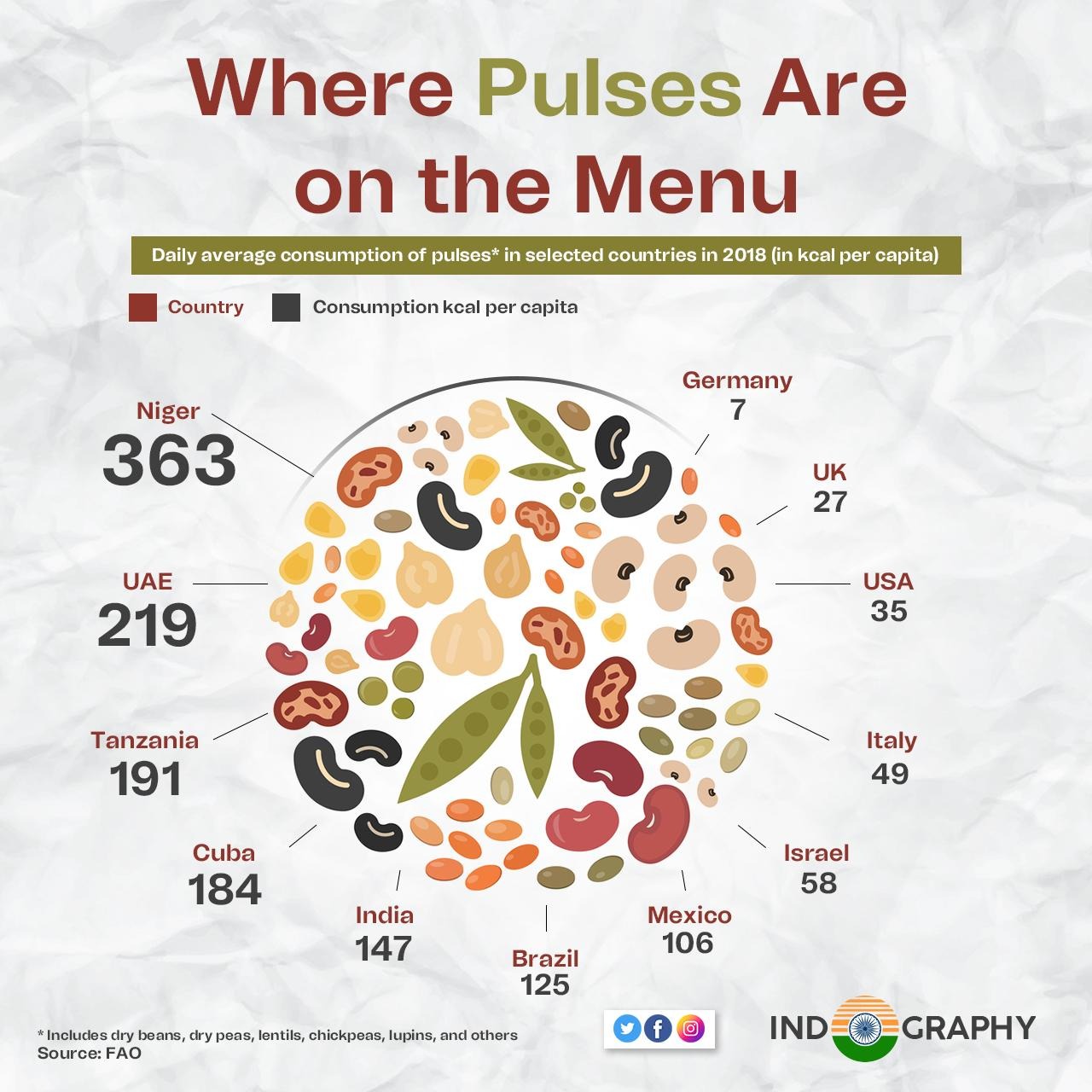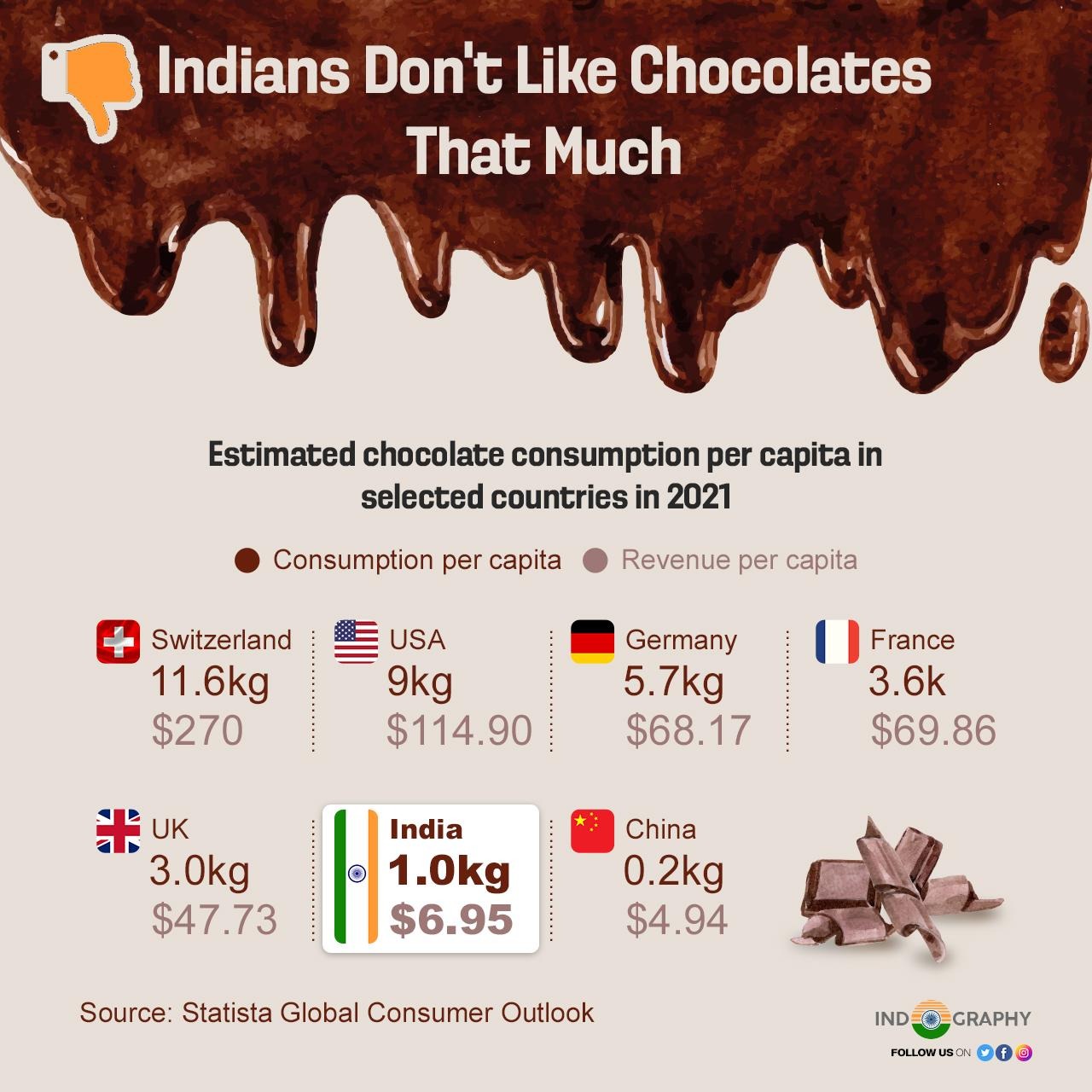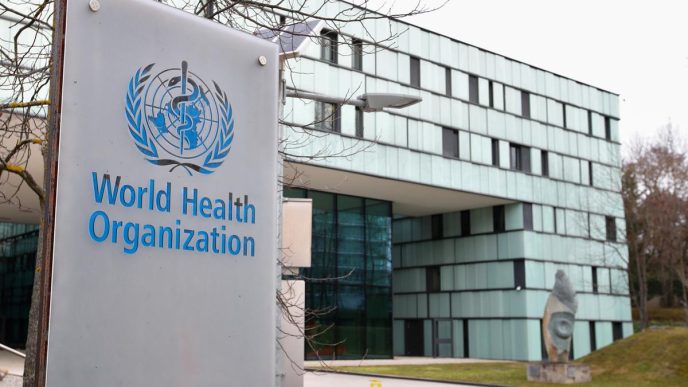What are Pulses?
Pulses are a type of legume that is a staple food in many parts of the world. They are high in protein and other essential nutrients and are an important source of nutrition for millions of people. Pulses grow in pods and come in a variety of shapes, sizes, and colors. The United Nations Food and Agriculture Organization (FAO) recognizes 11 types of pulses: dry beans, dry broad beans, dry peas, chickpeas, cow peas, pigeon peas, lentils, Bambara beans, vetches, lupins, and pulses nes.
Where Pulses are most common?
Pulses are most commonly consumed in countries in Asia, Africa, and Latin America, where they form an important part of the diet.
The above infographic shows that most pulses per capita are consumed in African countries, with Niger, Rwanda, and Tanzania eating some of the highest daily rations. While the consumption of a high level of pulses often goes together with poverty or a lack of access to resources, regional preferences also play a role. Cuba was among the biggest consumers at 184 calories from pulses per day and per capita – about the same as consumption in Haiti.
In India, pulses are an integral part of the traditional diet and are consumed in large quantities. India is the world’s largest producer and consumer of pulses, with a wide variety of pulses grown and consumed in different parts of the country. Chickpeas, lentils, and mung beans are some of the most popular pulses in India.
Brazilians’ love for the traditional bean dish feijoada showed in the ranking that every Brazilian consumes 125 kcal of pulses per day. Mexicans consumed 106 kcal per capita while Indians, who often favor vegetarian fare in the form of lentil or chickpea dishes – consumed 147 kcal a day.
While rich nations in Europe as well as the U.S. ate far fewer pulses, the United Arab Emirates is an outlier with a consumption of more than 219 kcal from pulses per day. A closer look at the types of pulses eaten in the country shows why. Emirati cuisine features many different types of pulses – from lentil and bean dishes to broad beans and peas as well as chickpeas used in hummus. The combination of them leads to the UAE’s high consumption level.
Overall, pulses are an important source of nutrition for many people in Asia, Africa, and Latin America, and are an integral part of the traditional diet in these regions.
Source: Statista












